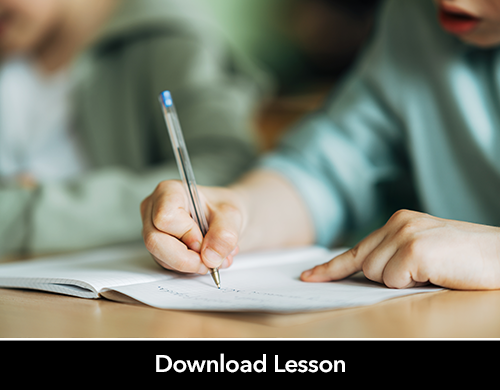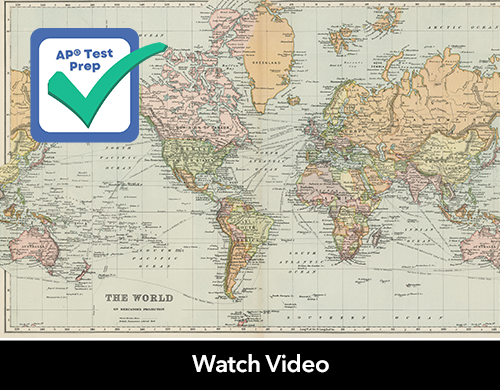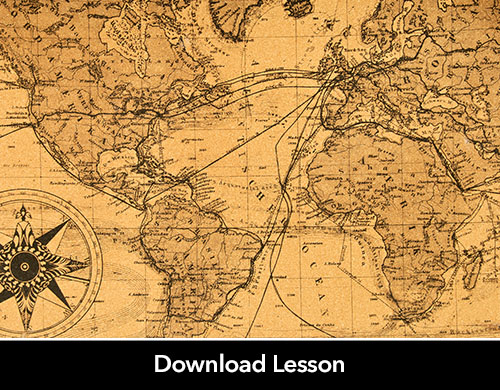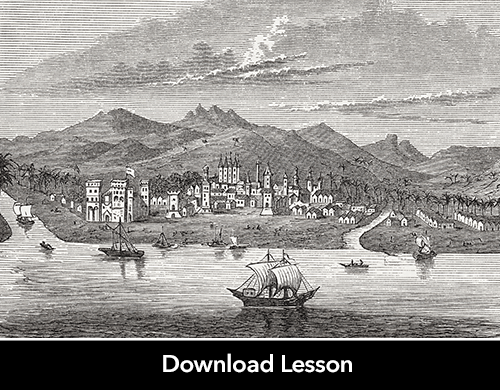How to Approach the 2023 AP® World History Exam
Experienced AP World History teacher Dave Drzonek and AP World History Exam table leader Charlie Hart discuss what students did well and what they...
AP & Honors Mathematics
Explore Wiley titles to support both AP and Honors mathematics instruction.
Literacy Skills & Intensive Reading
Connections: Reading – Grades 6–12
Empower student success with a proven intensive reading program that develops strong reading skills in striving readers.
Drama, Speech & Debate
Basic Drama Projects 10th Edition
Build students’ confidence and competence with comprehensive, project-based theatre instruction.
Literature
Connections: Literature
Support learners as they study dynamic, relevant texts and bring the richness of diverse voices to students through literature.
Literature & Thought
Develop critical thinking, reading, and writing across literacy themes, genres, historical eras, and current events.
Language Arts
Vocabu-Lit® – Grades 6–12
Help students build word power using high-quality contemporary and classic literature, nonfiction, essays, and more.
Connections: Writing & Language
Help students develop grammar, usage, mechanics, vocabulary, spelling, and writing and editing skills.
Reading/English Language Arts
Measuring Up to the English Language Arts Standards
Incorporate standards-driven teaching strategies to complement your ELA curriculum.
English Language Learners
Measuring Up for English Language Learners
Incorporate research-based best practices for ELLs with an approach that includes a focus on language acquisition strategies.
Mathematics
Measuring Up to the Mathematics Standards
Incorporate standards-driven teaching strategies to complement your mathematics curriculum.
Foundations
Measuring Up Foundations
Help students master foundational math skills that are critical for students to find academic success.
Science
Measuring Up to the Next Generation Science Standards
Give students comprehensive NGSS coverage while targeting instruction and providing rigorous standards practice.
Assessment
Measuring Up Live
Deliver innovative assessment and practice technology designed to offer data-driven instructional support.
For a better website experience, please confirm you are in:

This blog entry is designed to provide some hints to help your students improve their writing on the free-response section of the exam. The expectations, instruction, and instruction that teachers provide students related to FRQ writing is extremely important and will dramatically impact student performance on the exam. Do not leave this skill to your students to figure out on their own. You should provide numerous opportunities for your students to write responses throughout the course of the school year, but if you're in a crunch preparing for the exam this post should still offer some helpful guidance.
The Exam:
On the exam there will be three free-response questions on Section II of the AP® Human Geography exam. The first free-response question will not have a stimulus. The second question will have one stimulus. The third question will have two stimuli.
Each FRQ will typically include seven parts, lettered A through G with each part worth one point, for a total of seven points. Students are expected to answer all three questions in 75 minutes. That means students have an average of 25 minutes per question.
Students will be asked to use an authentic (real-world) situation or scenario to identify, define, describe, explain, compare, and apply concepts, processes, or models. Students will also be asked to analyze patterns, relationships, and outcomes (results/impacts). Free-response questions are designed to assess skills as well as concepts, processes, and models.
In Class:
In-class activities should require students to constantly be practicing the skills of the course and then writing responses that demonstrate their understanding of the concepts, processes, and models of the course. Teachers do not need to assign a full set of three formally assessed FRQs questions every day or unit, but students should be writing responses to at least one to two full FRQ questions per unit and smaller sections of questions at least once a week.
In the AMSCO® Advanced Placement® Human Geography book there are FRQs at the end of every chapter and a full exam at the end of the book. There is also a special section in every unit called “Write as a Geographer.” Use these tools to help guide students in improving their writing. In class I typically give students 20 to 30 minutes for each FRQ as a formal assessment.
Know vocabulary and concepts
Students must know and understand the content and concept vocabulary well. Most FRQ questions are centered on a single unit and then students are asked to apply a few major concepts. If students don’t know their vocabulary and concepts, writing a response that scores points can be very difficult. Additionally, many FRQs will ask students to apply a concept from a different unit to the question. See my previous blog on vocabulary here.
How should students structure their responses?
Each part of a response should be labeled the corresponding letter of the response. Have them start by labeling their first answer A, followed by their response. Students should start part B on a new line, , provide their response, etc. Follow the same procedure for all parts of the FRQ.
Why should students label each section of the FRQ?
Frankly, it’s annoying when the essay is not labeled A, B, C. It slows down the teacher’s ability to score the essay efficiently. In my class, I refuse to score essays not labeled.
Most importantly, when a student skips a part of the essay, say D, they often fail to recognize this and may forget to answer the question. Additionally, if they know they skipped the question, they must reread their response to remind themselves of which question they skipped, thereby slowing them down and taking away valuable time on other parts of the exam. Not a good investment.
The Verbs Matter: Free Response Questions (FRQs)
The verb used in the question directs the student on how much to write and how to approach the task. The word “claim” in the section below refers to the initial answer or assertion of a student. Claims by themselves are rarely enough to earn credit on the exam and often require supporting evidence and analysis to earn a point. Students need to understand that the burden of proof is on them. Students must prove to the reader/scorer that their response is correct using the proper concepts, evidence, depth, and details. Below are some suggestions on how much to write.
Final Suggestions
When students read the questions, circle verbs and underline key words and concepts. Write down a few quick ideas or examples (just a few words). Remember to have students label all parts of their essays A, B, C, D etc. Students should answer all parts of the questions and learn to budget their time.
If running short of time, make sure your claims are on point (first one to two sentences), but be careful accepting one-sentence responses as a typical response. The more students practice writing, the faster they will get in providing full responses. One-sentence responses should only be the norm with the verb identify.
As teachers we can have a major influence on a student’s writing process. Own this process in your class and you will see FRQ scores improve.

Experienced AP World History teacher Dave Drzonek and AP World History Exam table leader Charlie Hart discuss what students did well and what they...

As we get closer to the AP® World History Exam, students will begin to stress about the required essays they will write as part of the exam. The...

The teaching of AP® World History can be a daunting task at times. Teachers are asked to teach over 800 years of historical content and then develop...

Cultural diffusion and cultural syncretism are two important concepts in the AP® World History curriculum. Because of its importance, I’ve developed...

Teaching a young, eager, and naive student how to write a sophisticated DBQ is like teaching a similarly inexperienced athlete how to successfully...

It’s the time of year when teachers and students begin their final push towards preparing for the AP Human Geography exam. Teachers and students...

The Secondary Source Short Answer Question (SAQ) on the AP history exam presents a unique challenge: students must analyze and synthesize historical...

You may have heard about the “Irish” Thesis Formula, it is all over the internet, some teachers like it, others hate it, but whatever you think about...

You may have heard about the “Irish” Thesis Formula, it is all over the internet, some teachers like it, others hate it, but whatever you think about...

This lesson aims to show teachers and students how to develop a historical argument using Documents Based AP History (DBQ) documents. We will use...

The Long Essay Question (LEQ) on the AP U.S. History exam offers students an opportunity to construct a sophisticated historical argument, supported...

From a practical point of view, argumentation is at the heart of the free response section of the AP exam. This can be particularly difficult with...
